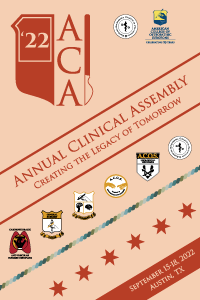Back
General Surgery
GS12 - Delayed Presentation of Open Globe Rupture with Traumatic Vision Loss
- PR
Patrick W. Ruane, n/a
Edward Via College of Osteopathic Medicine
Myrtle Beach, South Carolina, United States
Primary Presenter(s)
Introduction/Purpose: Open globe ruptures are a common sight threatening trauma consisting of decrease vision, loss of anterior chamber depth, irregular shaped pupil, 360-degree subconjunctival hemorrhage, and prolapse of uveal tissue. Delayed presentation further complicates the return of vision with infectivity, autoimmune pathology, and increases the likelihood for enucleation.
Methods or Case Description: A 52-year-old male presented to the emergency department with a chief complaint of a right eye injury that occurred 2 days ago, following a motorcycle accident. The patient noted being hit in the eye with a tree limb and had since been experiencing decreased vision and pain with opening of the right eye. On examination, the upper lid showed edema oculus dexter, periorbital ecchymosis, protective ptosis, and matting of the eyelids with clear drainage. The visual acuity showed only light perception with no visualization of the lens and iris, cortical spoking, and 360-degree subconjunctival hemorrhage with a 4 o’clock limbal penetrating wound sealed with prolapsed tissue. The patient’s treatment began with levofloxacin and globe exploration with ruptured globe repair. The patient received vancomycin, ceftazidime, and dexamethasone subconjunctivally and discharged to follow up with ophthalmology.
Outcomes: Open globe ruptures are a leading cause of blindness with 69.9% of injuries resulting from penetrating injuries and projectile objects. To preserve function, the diagnosis of globe rupture requires immediate ophthalmic examination. A protective shield should be placed, a tetanus vaccine administered, and the patient kept nil per os, with pain and nausea controlled in anticipation of surgical intervention. Intraocular foreign bodies and delayed presentation in wound closure of an open globe rupture greater than 24 hours are important risk factors for posttraumatic endophthalmitis and sympathetic ophthalmia. The immune privileged environment of the blood-ocular barrier increases the infection rate and decreases the return of visual perception when there is a delay of intervention. Due to the high degree of ocular inflammation associated with posttraumatic endophthalmitis and sympathetic ophthalmia the initiation of systemic steroid therapy should be administered within 24 hours of systemic antibiotics to prevent these complications.
Conclusion: In summary, this case illustrates the importance of early diagnosis, proper wound management, and the value of emergent ophthalmic consultation.
Methods or Case Description: A 52-year-old male presented to the emergency department with a chief complaint of a right eye injury that occurred 2 days ago, following a motorcycle accident. The patient noted being hit in the eye with a tree limb and had since been experiencing decreased vision and pain with opening of the right eye. On examination, the upper lid showed edema oculus dexter, periorbital ecchymosis, protective ptosis, and matting of the eyelids with clear drainage. The visual acuity showed only light perception with no visualization of the lens and iris, cortical spoking, and 360-degree subconjunctival hemorrhage with a 4 o’clock limbal penetrating wound sealed with prolapsed tissue. The patient’s treatment began with levofloxacin and globe exploration with ruptured globe repair. The patient received vancomycin, ceftazidime, and dexamethasone subconjunctivally and discharged to follow up with ophthalmology.
Outcomes: Open globe ruptures are a leading cause of blindness with 69.9% of injuries resulting from penetrating injuries and projectile objects. To preserve function, the diagnosis of globe rupture requires immediate ophthalmic examination. A protective shield should be placed, a tetanus vaccine administered, and the patient kept nil per os, with pain and nausea controlled in anticipation of surgical intervention. Intraocular foreign bodies and delayed presentation in wound closure of an open globe rupture greater than 24 hours are important risk factors for posttraumatic endophthalmitis and sympathetic ophthalmia. The immune privileged environment of the blood-ocular barrier increases the infection rate and decreases the return of visual perception when there is a delay of intervention. Due to the high degree of ocular inflammation associated with posttraumatic endophthalmitis and sympathetic ophthalmia the initiation of systemic steroid therapy should be administered within 24 hours of systemic antibiotics to prevent these complications.
Conclusion: In summary, this case illustrates the importance of early diagnosis, proper wound management, and the value of emergent ophthalmic consultation.

